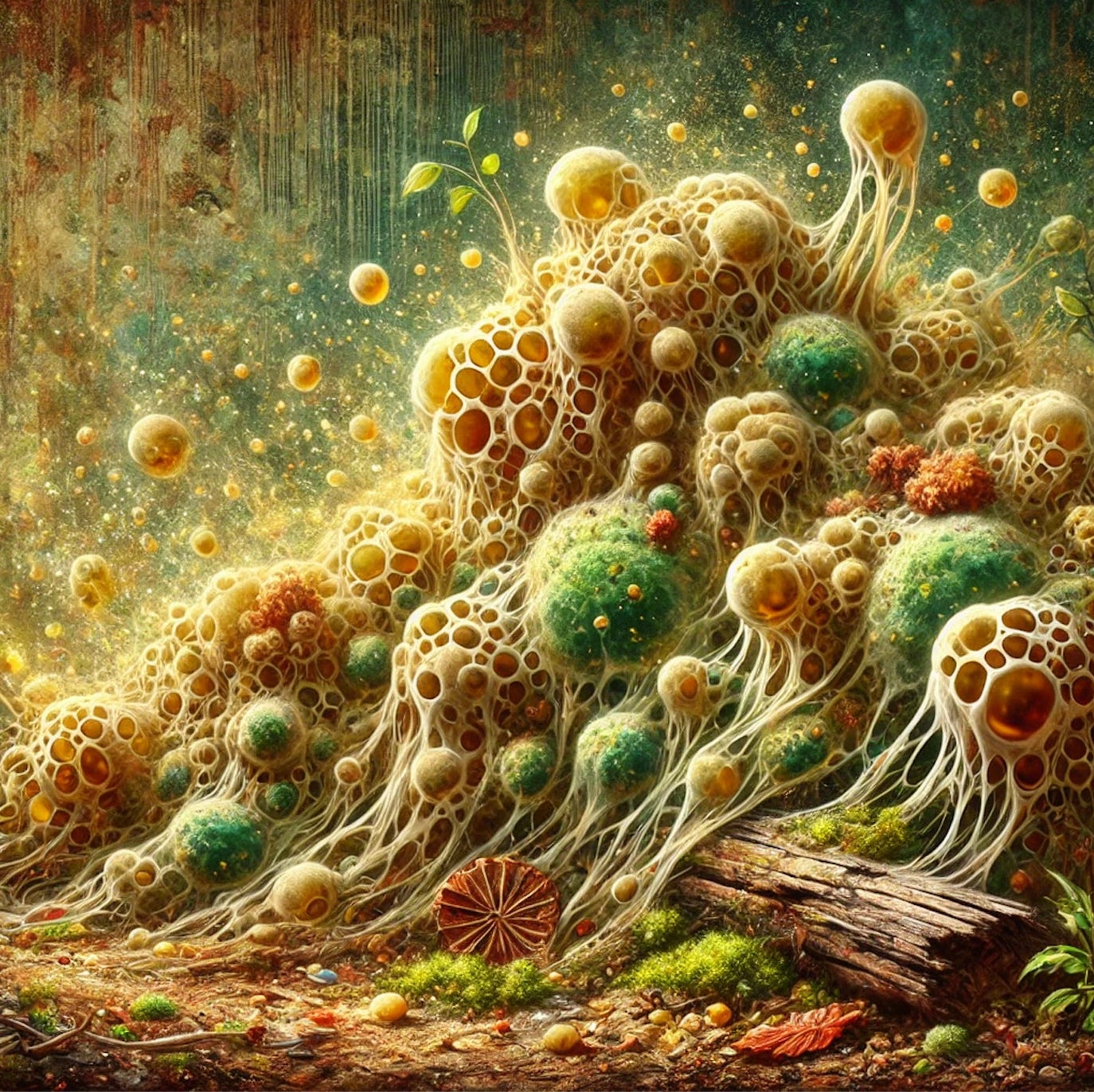While living systems need creativity to evolve and adapt, they also need coherence to function as a whole. In nature, DNA is often what gives coherence to systems. Our biological programming allows our cells to multiply, specialize, and then work in unison as a whole body. It also gives us instincts, such as the fight-or-flight response in the face of danger. But even in biological systems, coherence is much more impressive than mechanistic preprogramming. Instead, we see a level of self-organization that almost defies belief. In his wonderful book Emergence, Steven Johnson gives examples of this, from slime mold and termite colonies to city neighborhoods and artificial intelligence systems.[i] As he puts it, “when enough individual elements interact and organize themselves, the result is collective intelligence—even though no one is in charge.”
Take slime mold, for example. For much of its life, the mold exists as thousands of distinct single-celled units that are classified as a type of amoeba. But under the right conditions—when the weather is cool and there is a large food supply—those myriad cells coalesce into a larger unified organism that slowly crawls across the garden floor, consuming rotting leaves and wood as it moves. Coherence emerges. Perhaps you are more familiar with corals, which are actually colonies made up of hundreds of thousands of individual coral polyps, the animals primarily responsible for building coral reefs.
In a similar way, lichen—which covers around 6 percent of the earth’s surface—is a symbiotic composite organism. It emerges from algae or cyanobacteria living among the filaments of fungi. Both organisms benefit, exchanging protection, moisture, and nutrients for carbohydrates produced by photosynthesis. The cooperating organisms can live separately but in a different form. However, when they collaborate as lichen, they are neither plant nor fungus. Lichen is remarkable in other ways too: It can survive the vacuum of space and long periods of drought. It also shows one of nature’s most beautiful color palettes.
Source: Thriving: The Breakthrough Movement to Regenerate Nature, Society, and the Economy
Dr Wayne Visser is holder of the Galp Chair and a Professor of Practice in Regenerative Business, Innovation and Technology at Católica Porto Business School, as well as a Fellow and Head Program Instructor at the University of Cambridge Institute for Sustainability Leadership
[i] S. Johnson, Emergence: The Connected Lives of Ants, Brains, Cities and Software (London: Allen Lane, 2001).



